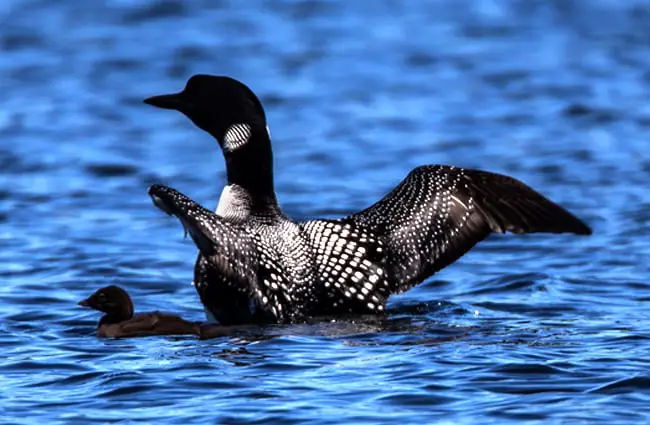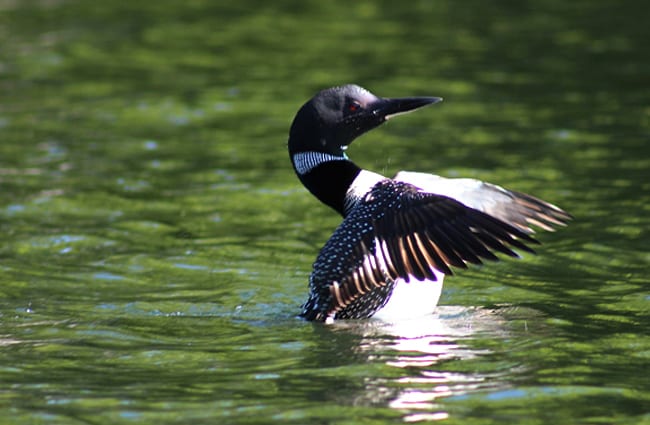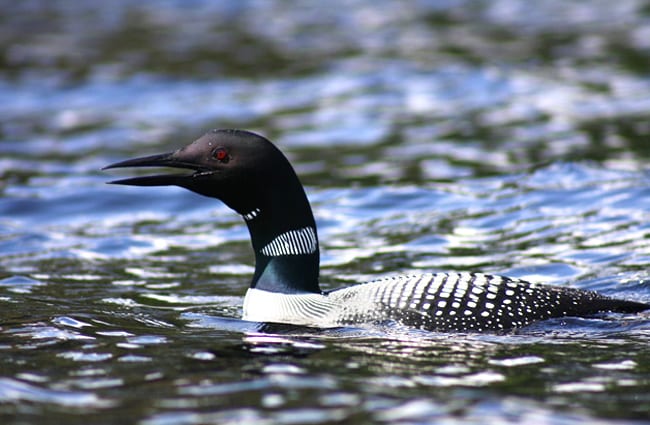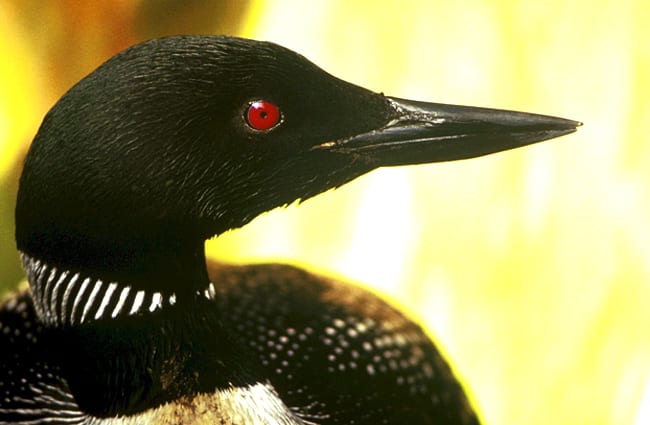The haunting call of the loon resonates across the pristine lakes of North America, a sound deeply woven into the fabric of wilderness and folklore. These captivating birds are more than just picturesque inhabitants of the water; they are a window into the complex ecosystems they help define. This guide delves into the fascinating world of loons, exploring their biology, behavior, ecology, and cultural significance.

What is a Loon?
Loons, members of the family Gaviidae, are large diving birds characterized by their striking black and white plumage, streamlined bodies, and specialized feet. There are five extant species of loons: common, red‑throated, Arctic, yellow‑billed, and Pacific. They are found primarily in the northern parts of North America and Europe, favoring cold, clear lakes and coastal waters. Loons are easily recognizable not just by their appearance but also by their unique vocalizations, yodels, wails, tremolos, and hoots, used for communication and territorial defense.
Physical Characteristics
Loons are surprisingly large birds, ranging in size from about 28 to 36 inches in length, with wingspans reaching over four feet. Their weight varies depending on the species and time of year, but generally falls between 4 and 13 pounds. Their dense bones and powerful muscles aid in diving, while their webbed feet propel them efficiently through the water. Their plumage is waterproof due to specialized oil glands. The coloration differs between species and sexes, often changing with the breeding season.
Habitat and Distribution
Loons are highly aquatic birds and are most at home on large, clear lakes, ponds, and sheltered coastal waters. They require bodies of water that are deep enough for diving but also have sufficient space for take‑off and landing. They breed primarily in freshwater habitats but will also forage in saltwater environments. Their distribution is closely tied to these suitable water bodies, with the highest concentrations found in Canada, Alaska, and the northern United States. They migrate south during the winter months, seeking open water and avoiding freezing temperatures.

Finding Loons in the Wild
For wildlife enthusiasts hoping to spot loons, focusing on northern lakes and ponds during the breeding season—spring and early summer—is the best strategy. Look for areas with abundant fish populations and minimal human disturbance. Loons are most active during dawn and dusk. Listen for their distinctive calls, which can travel long distances across the water. Patience and a quiet approach are essential for successful viewing.
Diet and Foraging Behavior
Loons are skilled divers and primarily feed on fish. Their diet varies depending on species and location but commonly includes trout, perch, sunfish, and minnows. They will also consume crustaceans, amphibians, and aquatic insects. Loons hunt by diving underwater, using their feet to propel themselves and their bills to capture prey. They can dive to depths of over 200 feet and remain submerged for up to three minutes. They typically swallow fish headfirst to aid digestion.
Reproduction and Life Cycle
Loons are monogamous birds and often mate for life. They establish breeding territories on lakes and ponds, defending them aggressively against rivals. The breeding season begins with elaborate courtship displays, including vocalizations, head‑bobbing, and synchronized swimming. Loons build simple nests of vegetation near the shore. Females typically lay two eggs, which are incubated by both parents for about 28 days.

Chicks are precocial, meaning they are relatively independent at birth. They are covered in downy feathers and can swim and dive shortly after hatching. Both parents care for the chicks, feeding them fish and protecting them from predators. Young loons remain dependent on their parents for several months, learning essential foraging and survival skills. They typically reach sexual maturity at three to four years of age.
Loons and the Ecosystem
Loons play a crucial role in maintaining the health of aquatic ecosystems. As predators, they help regulate fish populations. Their presence can also indicate water quality, as they are sensitive to pollution and habitat degradation. Loons interact with other animals in various ways. They sometimes compete with other diving birds for food. They also serve as prey for larger predators such as eagles, foxes, and coyotes. Their nesting sites are often vulnerable to disturbance from human activities and other wildlife.
Evolutionary History
The evolutionary history of loons is fascinating, with fossil evidence suggesting their lineage dates back to the Eocene epoch, over 50 million years ago. Early loons were likely more terrestrial than their modern counterparts, gradually adapting to an aquatic lifestyle. Their streamlined bodies, webbed feet, and dense bones evolved over time to enhance their diving abilities. The fossil record indicates that loons once had a wider distribution, with species found in both North America and Europe. Today, the family Gaviidae consists of only five extant species, highlighting the importance of conservation efforts.

Loons and Human Culture
Loons hold a significant place in the folklore and mythology of many Indigenous cultures in North America. They are often associated with water spirits, healing, and transformation. Their haunting calls are believed to possess spiritual power. Loons have also inspired artists, writers, and musicians, appearing in paintings, poems, and songs. Their image is often used to symbolize wilderness, tranquility, and the beauty of nature.
Loons and Human Interaction
Human activities pose several threats to loon populations. Habitat loss, pollution, entanglement in fishing gear, and collisions with boats are all major concerns. Acid rain, which contaminates lakes and ponds, can negatively impact loon reproduction. Lead poisoning, caused by ingestion of lead fishing tackle, is another serious issue.
If you encounter a Loon…
Maintain a respectful distance. Avoid approaching too closely or disturbing their nesting sites. If you witness a loon entangled in fishing gear, contact a wildlife rehabilitation center or local authorities. Report any instances of pollution or habitat degradation to the appropriate agencies.
Caring for Loons in Captivity
Loons are notoriously difficult to maintain in captivity due to their specialized needs. They require large, deep enclosures with clear water and ample space for diving and swimming. Their diet should consist primarily of fresh fish. They also need access to nesting materials and secluded areas for breeding. Careful monitoring of water quality is essential. Providing opportunities for natural behaviors, such as diving and foraging, is crucial for their well-being. Avoid overcrowding and minimize human disturbance.

The loon is a remarkable bird, embodying the wild spirit of the north. Understanding its biology, behavior, and ecological role is essential for ensuring its survival for generations to come. By appreciating these magnificent creatures and protecting their habitats, we can help preserve the haunting beauty of the loon’s call across the landscapes they grace.

![Red Angus Closeup of a beautiful Red Angus cowPhoto by: U.S. Department of Agriculture [pubic domain]https://creativecommons.org/licenses/by/2.0/](https://animals.net/wp-content/uploads/2020/03/Red-Angus-4-238x178.jpg)




![Red Angus Closeup of a beautiful Red Angus cowPhoto by: U.S. Department of Agriculture [pubic domain]https://creativecommons.org/licenses/by/2.0/](https://animals.net/wp-content/uploads/2020/03/Red-Angus-4-100x75.jpg)

